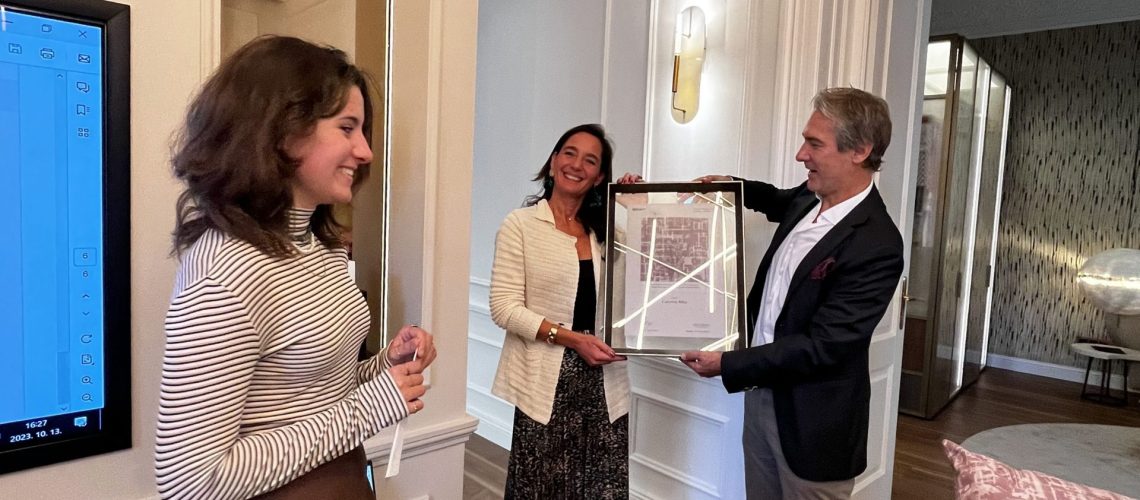The Budapest Design Week, which is 20 years old this year, provided the framework for the textile design competition, which was announced by Estorio showroom and Italy’s leading textile company, Flukso. The three prize winners were able to present their applications on 13th October for the audience, Eszter Radnóczy, interior designer and Estorio founder and Raul Scruzzi, Head of Business Development of Flukso appreciated the first-placed Réka Cserveny’s work.
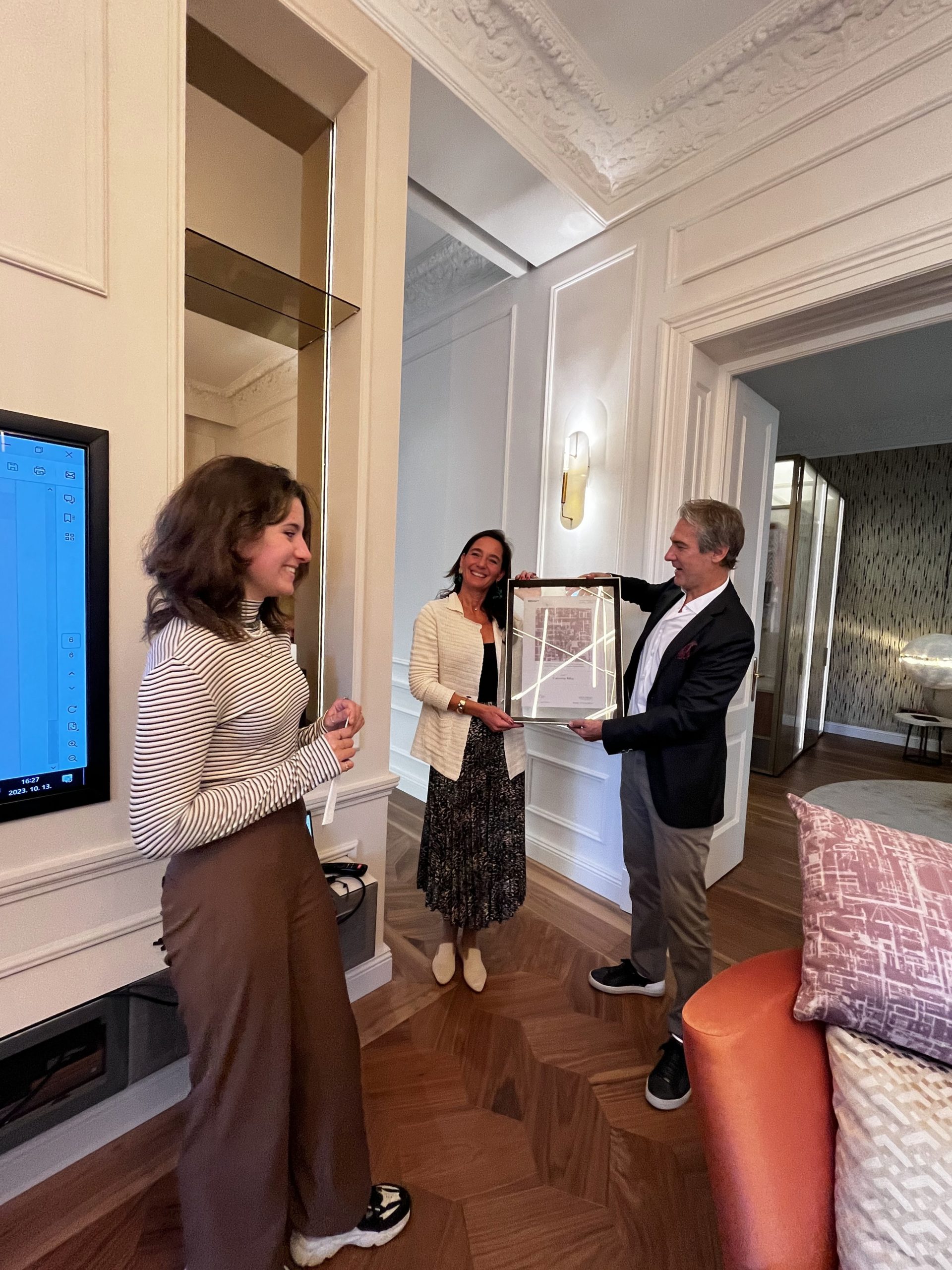
The goal of Estorio, which launched the tender, was to inspire graphic designers to create a textile pattern, in which the magical world of the Hungarian State Opera and the Hungarian opera music also plays a prominent role. Their partnerin the tender was one of Italy’s leaders textile company, Flukso, which produced high-quality fabric and unique printing provided them with technology.
The winner textile will be exhibited with the name of the winning designer in the Estorio showroom together which is located in Dalszínház street, in the neighborhood of the Opera House. The design also had to take into account the colour scheme and style of the showroom, and it was important to ensure that the series of patterns or designs would fit into the Estorio space.
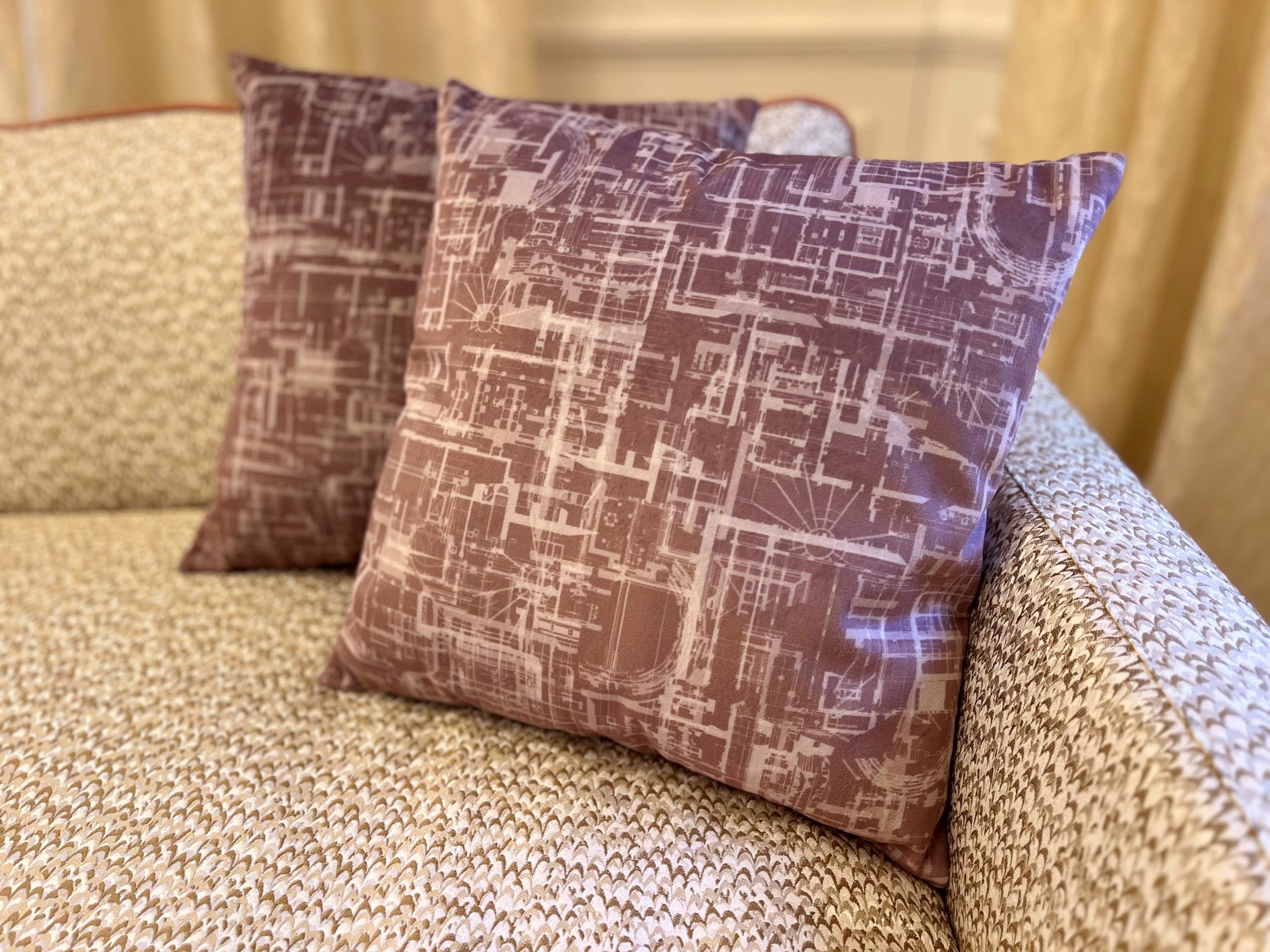
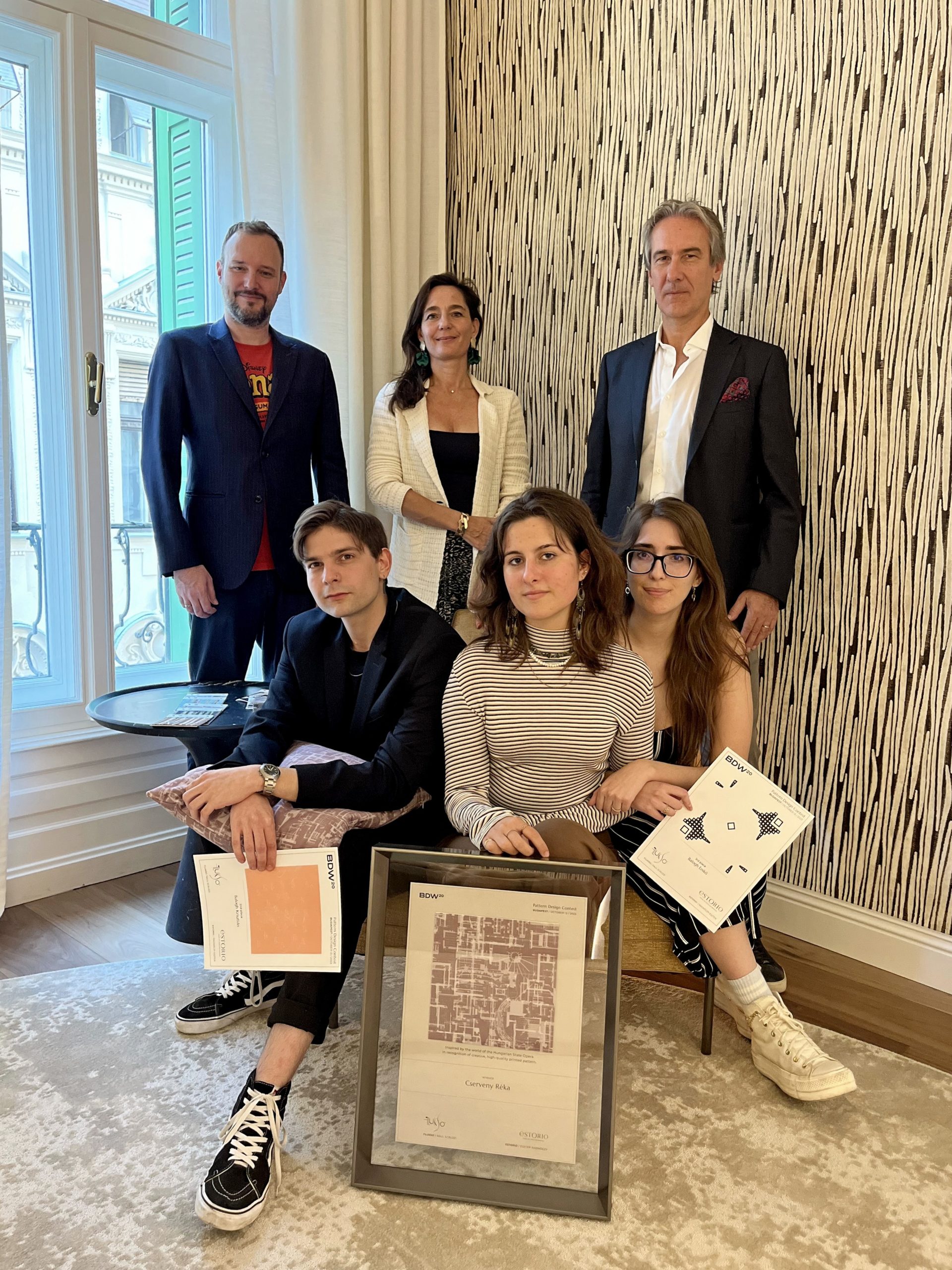
Second prize winner Krisztián Balogh’s work was inspired by the sphinx sculpture in front of the Opera House, combining it with soft colours and eye-catching india patterns. The third place winner, Enikő Balogh, transformed the dancers’ movements into a repetitive graphic pattern. The first prize winner presented a very exciting piece of work: Réka Cserveny took the architectural floor plan of the Opera House and creatively transformed it into a textile pattern that showed playfulness and met high aesthetic standards.
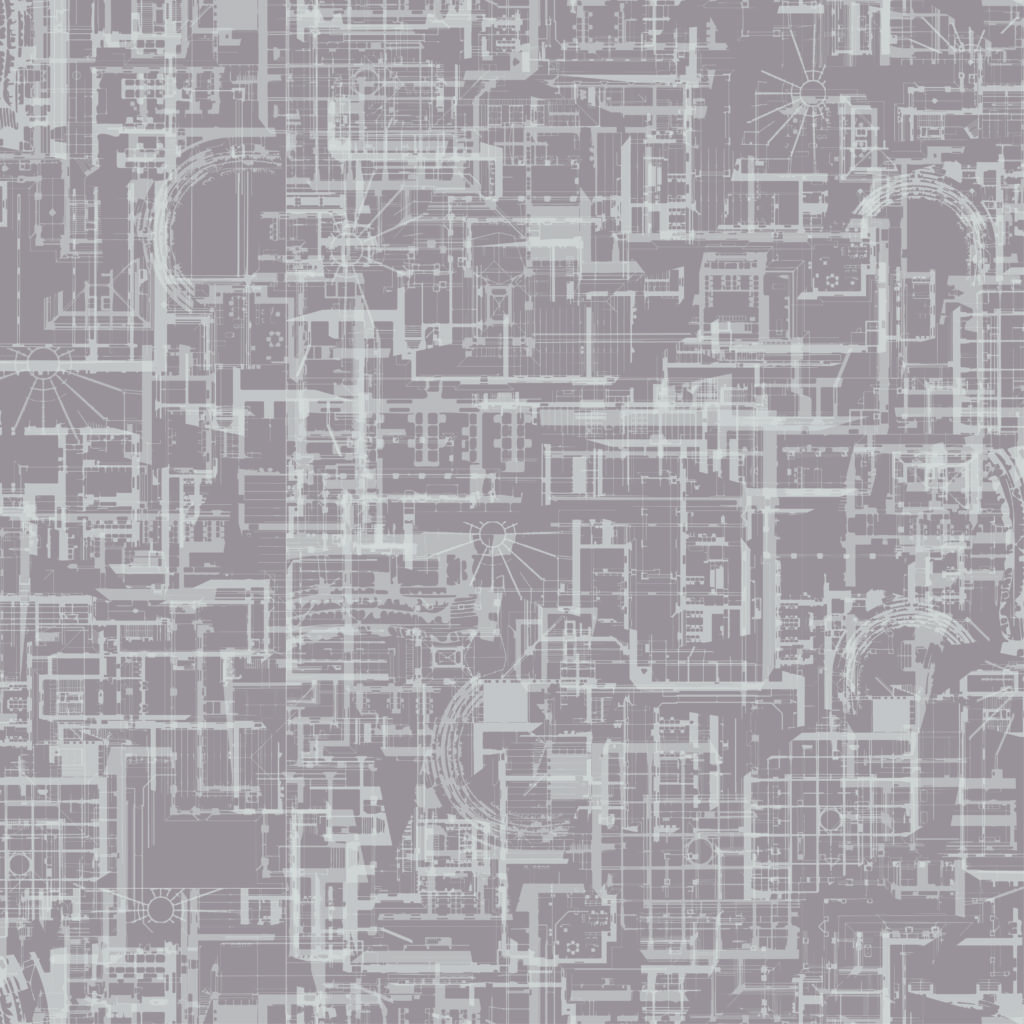
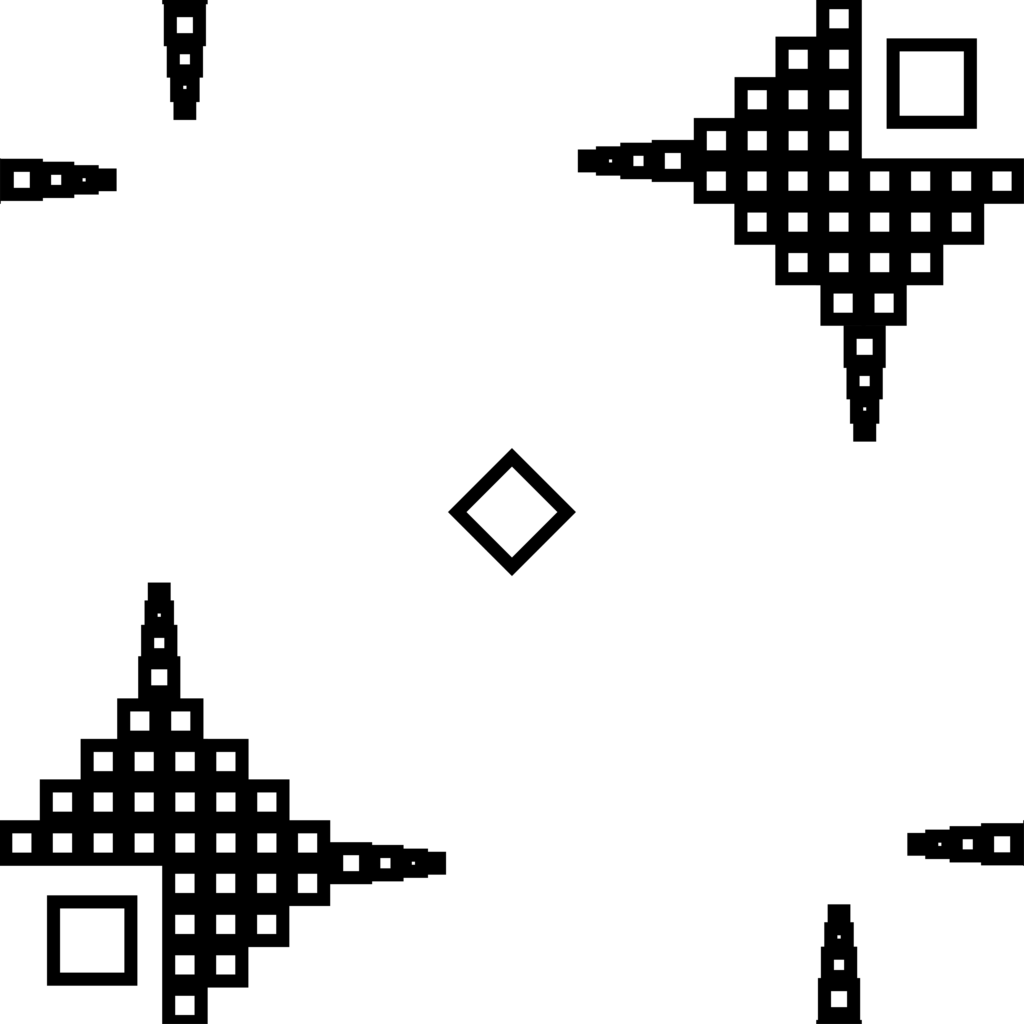
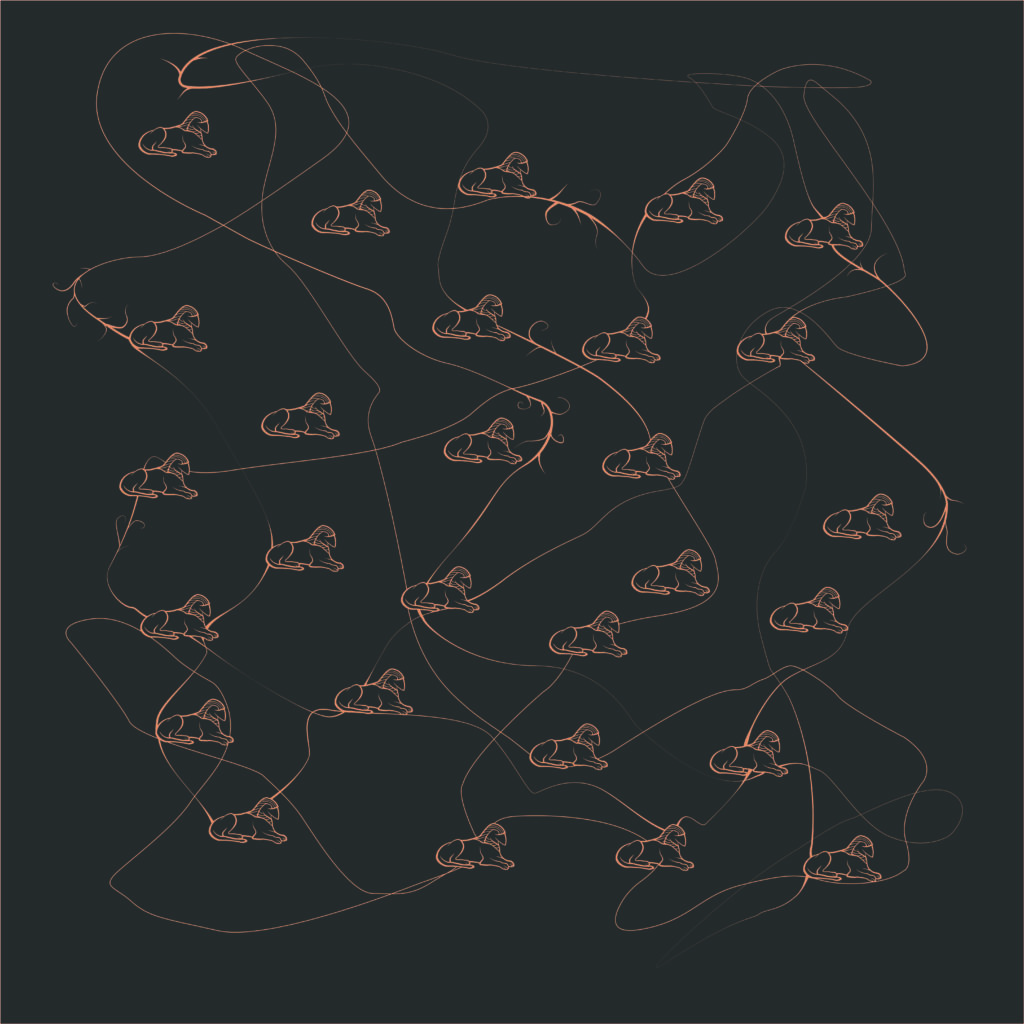
Interior designer Eszter Radnóczy said, “We were impressed by Réka’s work, the way she turned a creative idea into a very usable, unique design. The usability of the pattern was very well thought out, in the high level textile design represented by Flukso such a design is very applicable, it feeds on a specific motif system, but can also function as an abstract pattern.”
The afternoon continued with a round table discussion announced as part of the Budapest Design Week programme. The invited guests, András Almási-Tóth, Artistic Director of the Opera House, Móni Kovács, founder of Komonka textiles and Adrienn Nagy, Assistant Professor and founder of the Rienne brand, were guests of Eszter Radnóczy, who discussed the relationship between art and interior design.
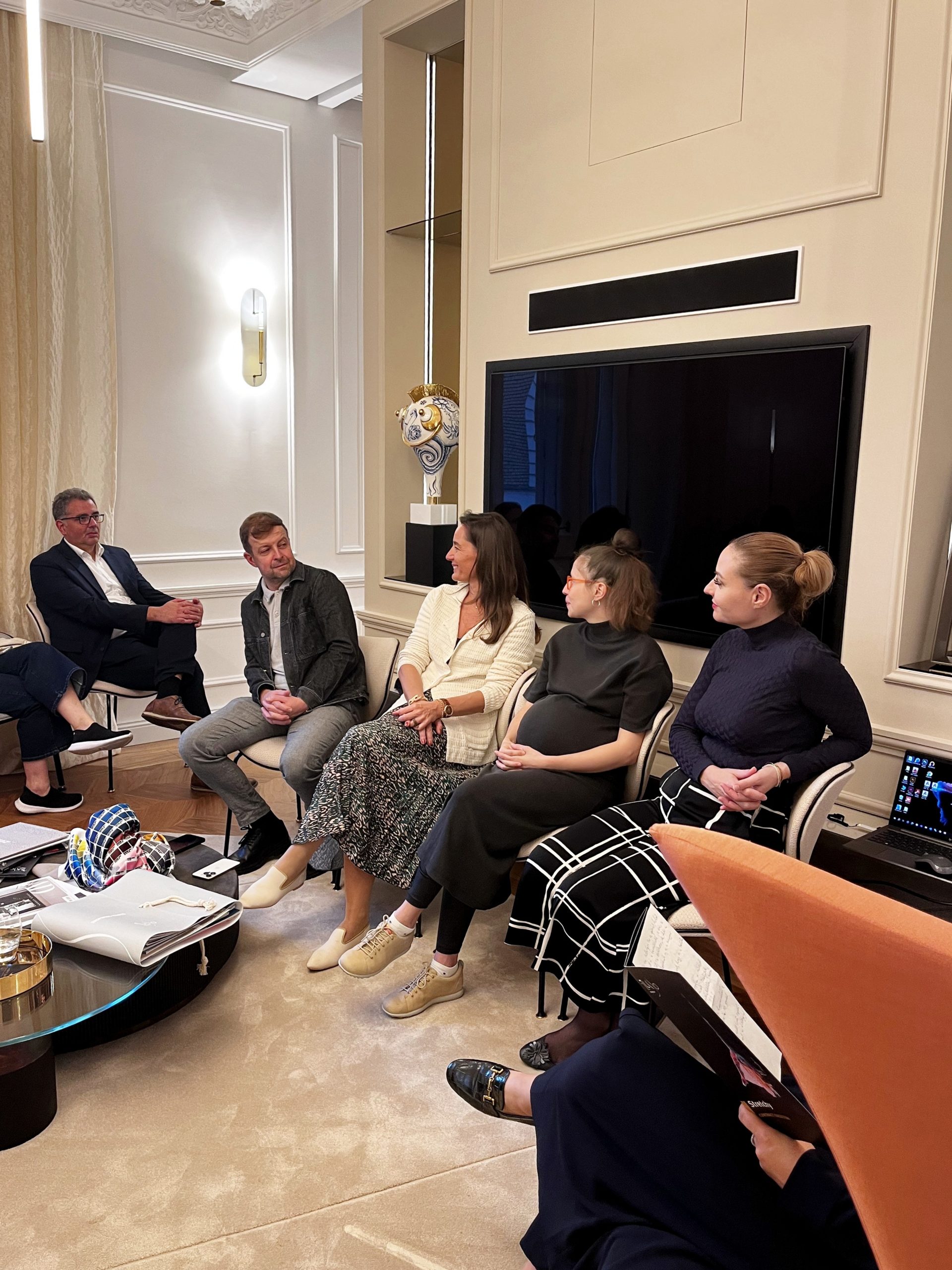

It was pointed out that interior design cannot be separated from art, and traditionally they have been closely co-existing fields. András Almási-Tóth shared with the audience that after the renovation, the Opera House wants to offer a complex experience on all levels (from arrival to departure), not only the space but also the mindset has become more open. Eszter Radnóczy explained in detail how their showroom, opened a year ago, is connected to the elegant world of the Opera House, and what are the sophisticated features that make the space suitable not only for design lovers, but also for celebrating with a glass of prosecco in the apartment overlooking the Opera House before or after an opera performance. Further analysing the relationship between interior design and art, Móni Kovács spoke about the biggest changes in the textile industry in Hungary, the decline of weaving mills and the decline of the manufacturing background, and told that abroad it was considered a speciality that he was able not only to design but also to realise textiles. Adrienn Nagy added that in this country it is difficult even for university students to meet the quality that even a woman’s costume could offer in the great era of textile art. Sustainability was a prominent theme in the discussion: circular thinking gives us the chance to reintroduce into our lives the works of previous eras that need to be revisited.
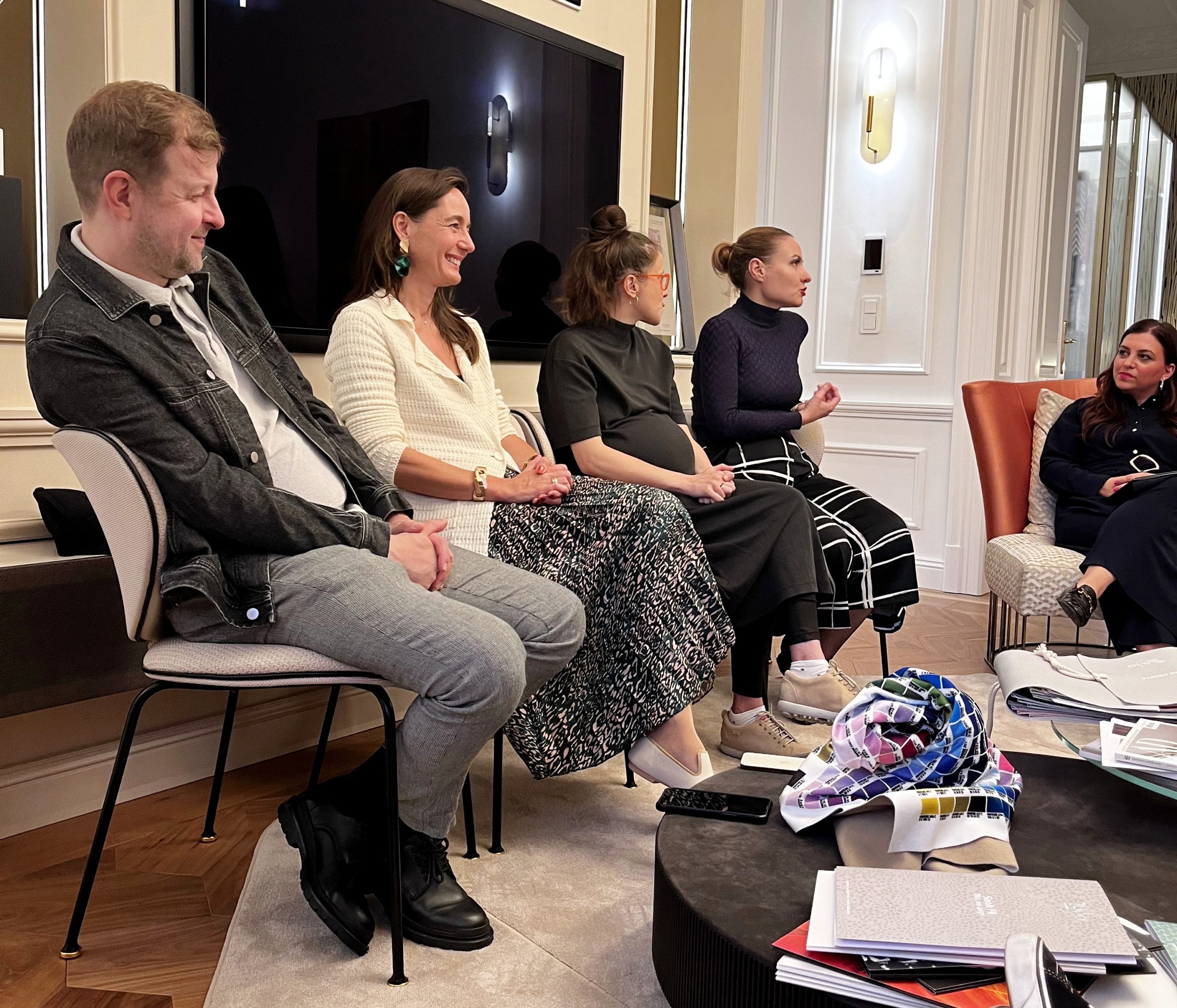
Among the visions for the future, all the interlocutors stressed that supporting art, finding artists can only be the first step, the aim is to create higher quality works, unique artistic expressions, designed for realisation in domestic conditions, in interior design – the intention, openness and connection of designers and creators is already a given, a joyful starting point.

